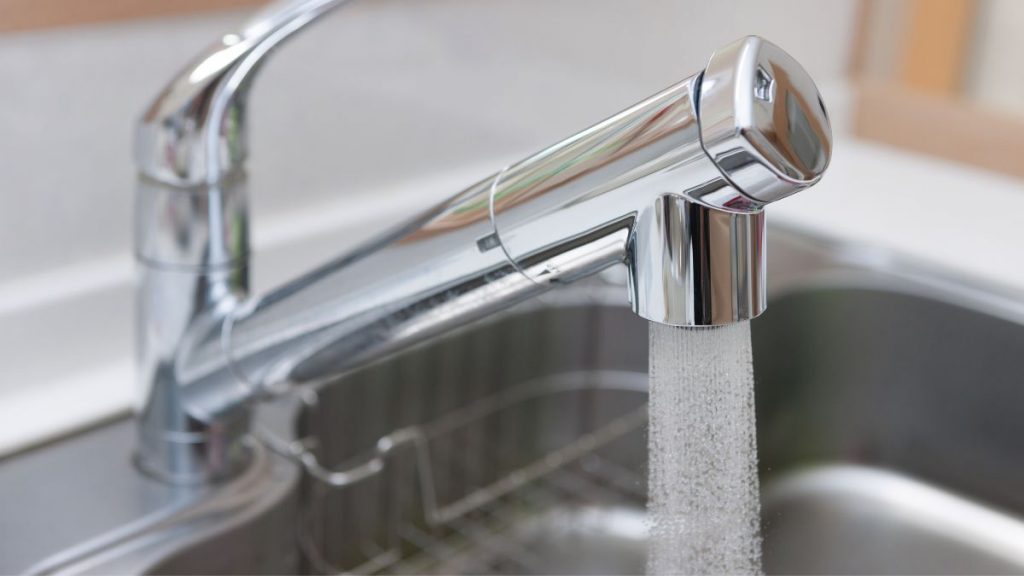Are you looking to upgrade the look of your kitchen by installing a new faucet? Before beginning your kitchen faucet project, it is essential to determine the size and type of hole needed for the installation.
This blog post will discuss the size of the hole most faucets need. These tools work best for drilling holes in different materials and provide tips to make installation easier. Read on to learn more!
Hole Sizing
Most faucets with no air gap may or may not come with tubing attached require a hole between 7/8″ and 1-1/8″ in diameter. However, you can install most standard faucets comfortably in holes up to 1-1/8″.
The instructions that come with your faucet will provide specific details regarding the size and type of hole needed for the faucet installation, which may vary depending on the manufacturer and model. Therefore, it is important to consult these instructions before beginning your project.
Working With Existing Holes
If you have an oversized hole, you’ll need to find a big escutcheon plate to fill the gap. Check your local hardware or plumbing supply store for larger options.
If the hole is too small, it must be drilled with a sharp metal bit from a hardware store. Unfortunately, there is no other way to remedy this issue.
Drilling Through Different Sinks

Drilling small holes into a stainless steel sink is simple. Start by drilling a pilot hole with a 7/16″ or 1/2″ bit, then use the cone-shaped “Unibits” to create an ever larger hole. These Unibits are especially effective on stainless sinks and make the drilling process effortless.
Larger holes may require more specialized tools, such as a hole saw. A hole saw is likely your best option if you’re using hardware-store quality tools.
Regarding porcelain sinks, newer models are usually thin enough to be drilled with a standard masonry drill bit. If you have any doubts, the best thing to do is consult the sink manufacturer for advice before starting your project.
Finally, it’s important to note that drilling through older porcelain or cast iron sinks should only be attempted with access to special tools. Again, it’s best to leave this project to the professionals.
Frequently Asked Questions
Are all 3 hole faucets the same size?
No, faucet installation details will vary depending on the specific manufacturer and model, so it is important to consult the instructions that come with your faucet.
Do I need a hole saw for my kitchen faucet?
Most standard (non-air-gap) faucets require a hole between 7/8″ and 1-1/8″ in diameter, with or without tubing attached. However, you can install most standard faucets comfortably in holes up to 1-1/8″, so a hole saw may not be necessary.
However, a hole saw may be necessary if you are drilling a larger hole for an air gap or other specialty faucet.
It is best to consult the manufacturer’s instructions before beginning your project. They will include specific details regarding the size and type of hole needed for the faucet installation.
How do I know if my faucet hole will fit?
Most standard (non-air-gap) faucets require a hole with a diameter of between 7/8″ and 1-1/8″ if the tubing is attached or not. However, you can install most standard faucets comfortably in holes up to 1-1/8″.
Are kitchen faucet holes universal?
No, kitchen faucet holes vary in size and shape depending on the manufacturer and model. Therefore, it is important to consult the instructions with your faucet for exact details on how to install it properly.
Final Thoughts
When installing a kitchen faucet, the size of the hole you will need to drill depends on several factors, including the type and model of the faucet. Make sure to consult the instructions with your faucet for exact details on how to install it properly.
Keep in mind that drilling through steel, porcelain, or cast iron may require special equipment and that some older porcelain or cast iron sinks should only be drilled with the help of a professional.

